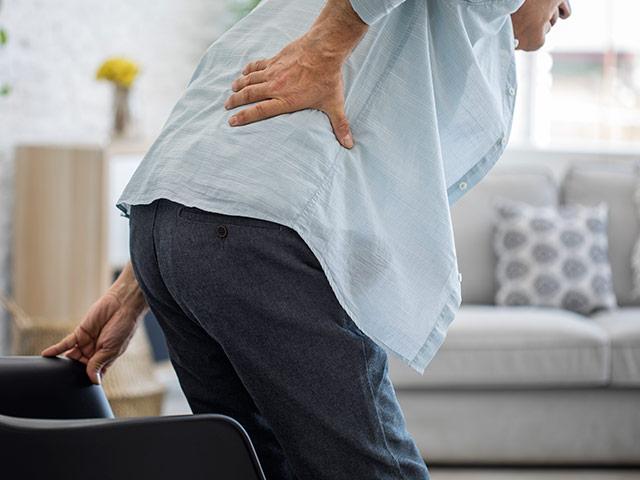Living with chronic pain can be challenging, affecting various aspects of your life. While medical treatments play a crucial role, making positive lifestyle changes can significantly contribute to pain management and overall well-being. By incorporating regular exercise, adopting a balanced diet, and practicing stress relief techniques, you can enhance your quality of life and take control of your pain. In this guide, we’ll explore how these lifestyle changes can make a difference in pain management.
Exercise: Movement for Pain Relief
Regular exercise is a powerful tool in pain management. Engaging in physical activity offers a range of benefits, from strengthening muscles to releasing natural pain-relieving chemicals known as endorphins. Here’s how exercise can help:
1. Muscle Strengthening:
Strengthening muscles around the affected area can provide support, reduce strain, and alleviate pain. Work with a physical therapist to develop an exercise routine tailored to your needs.
2. Improved Flexibility:
Gentle stretching and flexibility exercises can enhance joint mobility and reduce stiffness, particularly beneficial for conditions like arthritis.
3. Enhanced Blood Flow:
Exercise improves blood circulation, which can promote healing, reduce inflammation, and alleviate pain.
4. Endorphin Release:
Endorphins are natural painkillers produced by the body during exercise. They contribute to a sense of well-being and can temporarily alleviate pain.
5. Mental Well-being:
Exercise also benefits mental health by reducing stress, anxiety, and depression—conditions that can exacerbate pain perception.

Diet: Nourishing Your Body
A balanced diet can support pain management by providing the nutrients your body needs to function optimally. Certain foods have anti-inflammatory properties that can help reduce pain and improve overall well-being:
1. Omega-3 Fatty Acids:
Foods rich in omega-3 fatty acids, such as fatty fish (salmon, mackerel), flaxseeds, and walnuts, have anti-inflammatory effects that can help alleviate pain.
2. Antioxidant-Rich Foods:
Colorful fruits and vegetables, such as berries, oranges, spinach, and kale, are packed with antioxidants that combat oxidative stress and inflammation.
3. Whole Grains:
Opt for whole grains like brown rice, quinoa, and whole wheat bread, which provide sustained energy and essential nutrients.
4. Lean Proteins:
Include lean sources of protein, such as chicken, turkey, tofu, and legumes, to support muscle repair and overall health.
5. Stay Hydrated:
Drink an adequate amount of water throughout the day to maintain hydration and support various bodily functions.
Stress Relief: Calming the Mind and Body
Stress has a profound impact on pain perception. Chronic pain can cause stress, and in turn, stress can worsen the experience of pain. Incorporating stress relief techniques into your daily routine can break this cycle:
1. Mindfulness Meditation:
Mindfulness meditation involves focusing your attention on the present moment. It can help shift your focus away from pain and reduce stress levels.
2. Deep Breathing:
Practicing deep, slow breathing techniques can trigger the body’s relaxation response, easing tension and promoting a sense of calm.
3. Yoga and Tai Chi:
These mind-body practices combine movement, breath, and mindfulness. They can enhance flexibility, relaxation, and mental well-being.
4. Creative Outlets:
Engaging in creative activities you enjoy, such as painting, writing, or playing a musical instrument, can be therapeutic and provide an outlet for stress.
5. Adequate Sleep:
Prioritize sleep and establish a regular sleep routine. Quality sleep is essential for pain management and overall health.
Consistency and Gradual Progress
When incorporating these lifestyle changes, remember that consistency is key. Start slowly and gradually increase the intensity and duration of exercise. Make dietary changes one step at a time, and practice stress relief techniques regularly to experience their full benefits. Keep in mind that everyone’s body responds differently, so listen to your body and adjust as needed.
Consulting Professionals
Before making significant lifestyle changes, especially if you have an existing medical condition, it’s important to consult healthcare professionals:
1. Healthcare Provider:
Discuss your plans with your healthcare provider, especially if you have any underlying medical conditions or are taking medications.
2. Physical Therapist:
Consult a physical therapist to create an exercise plan tailored to your needs, ensuring you’re engaging in safe and effective activities.
3. Nutritionist:
If you’re considering dietary changes, a nutritionist can provide guidance to ensure your new eating habits meet your nutritional needs.
4. Mental Health Professional:
If stress and mental health are impacting your pain, consider speaking with a mental health professional who can guide you in managing stress and anxiety.
Conclusion
Incorporating exercise, adopting a balanced diet, and practicing stress relief techniques are potent tools for pain management and overall well-being. These lifestyle changes empower you to take an active role in your health and enhance your quality of life. While these changes require dedication and effort, the rewards are worth it—improved physical strength, reduced pain perception, and a greater sense of control over your body and mind. Remember that pain management is a journey, and by embracing these lifestyle changes, you’re taking significant steps towards a healthier, more fulfilling life when you see their product features and benefits.





